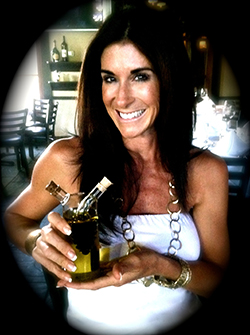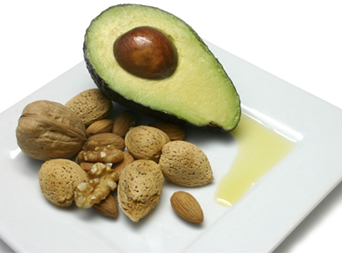
|
What are good fats? You can often tell a good fat from a bad fat simply by looking at how solid it is at room temperature. Olive oil, for example, is liquid at room temperature. Butter, lard and the white fat you trim off a cut of beef are solid at room temperature.
However, keep in mind that some “liquid” oils are better than others as well. Grape seed and olive oil are better choices than vegetable oil. Having said that…
The difference between their appearances at room temperature has to do with the degree of saturation. The saturated varieties are solid or nearly solid at room temperature. Cheese is another example of the saturated type.
If left out of the refrigerator for several hours, it may become softer, but it will never become liquid at room temperature. Cheese, though, is not bad for you in moderation. It can be an additional protein source but just stick to the whiter cheese options when considering what are good fats.
The saturated type causes several problems in the bloodstream, which is why it is bad for the health of your heart and blood vessels. This is the type that contributes most to high LDL cholesterol levels.
The LDL particles of cholesterol can become stuck in the walls of the arteries when they are being carried to tissues to be used for energy or for other purposes. Research has shown that cholesterol in foods contributes less to high LDL cholesterol levels than do saturated fats.
Since you need some in your diet to help keep your hormones balanced and for your muscles to use for energy, here’s a list of foods that provide various types of healthy fats.

|
So what are good fats you should be consuming?
- Salmon, tuna and other types of fatty fish—provide omega-3s, the healthy heart fat that helps to increase good HDL cholesterol levels. HDL particles gather up LDLs and carry them away from the bloodstream.
- Walnuts, cashews, pecans, almonds and other nuts—also a source of omega-3s
- Olive, grape seed and canola oils—use these for cooking and for salad dressings. They are sources of omega-3s and provide antioxidants such as vitamin E. Grape seed oil is simply delicious.
Other fatty foods that fall under “what are good fats” you might want to include in your diet are avocados and chickpeas. If you like guacamole or hummus, you’ll be happy to know that even though they have a relatively high fat-content, it is the kind of fatty acids that are good for your health.

|
When it comes to healthy eating habits and fat, there is another type to avoid. It is commonly referred to in the media as trans-fat. On a label of ingredients, it would be listed as partially hydrogenated vegetable oil.
Trans-fat exists in nature only in very small amounts. For example, there may be traces in some cuts of fatty beef. Partially hydrogenated oil does not exist in nature. It is man-made. If you have ever baked, you may at some point have used vegetable shortening. Vegetable shortening is partially hydrogenated oil. It is not liquid at room temperature.
 |
In the U.S., manufacturers are allowed to use partially hydrogenated oil in their products and still use the “zero grams of trans-fat” label. The government decided food manufacturers could use the label as long as there was less than ½ gram of trans-fat per serving.
So, read the label of ingredients if you want to know for sure. Trans-fat contributes to heart disease and cancer.
A healthy diet consists of complex carbs, good fats and proteins. Take the time to learn more about these three main dietary components and you might add more time to your life.


